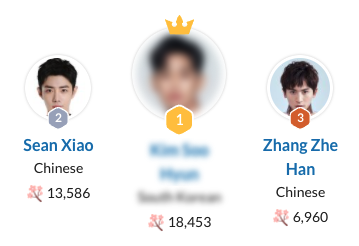Moonlit Reunion focuses on two realms—human and demon—excludes immortals.
The story embeds Taoist principles in its human-demon narrative, with
Taoist Mapping in Moonlit Reunion
1. Tao (The Way) = The Supernatural Realm / Demon City
The Demon City, the hidden realm of demons that Wu Zhen governs as the Cat Master, represents the Tao, the invisible, universal force that flows through and connects all things in Taoist philosophy. The human and demon realms together form a unified cosmic order, akin to the Tao’s all-encompassing nature. Wu Zhen and Mei Zhu Yu’s ability to see and interact with demons ties them to this unseen realm, reflecting the Taoist idea of aligning with the deeper, intangible flow of existence. The Demon City, as a mystical counterpoint to Chang’an’s human world, embodies the Tao’s role as the underlying principle governing both realms.
2. Wu Wei (Effortless Action) = Wu Zhen and Mei Zhu Yu’s Governance
The Taoist principle of acting in harmony with the natural order without force or aggression, aligns with how Wu Zhen and Mei Zhu Yu manage the balance between the human and demon realms. Their subtle, hidden roles as protectors reflect effortless action, avoiding overt displays of power. Wu Zhen conceals her identity as the Cat Master behind her carefree, dandy persona, acting decisively yet harmoniously to maintain order in the Demon City. Mei Zhu Yu, a Taoist prodigy, uses his spiritual arts with restraint, likely guiding demons rather than dominating them, embodying Wu Wei.
3. Yin and Yang = Human and Demon Realms
The human and demon realms in Moonlit Reunion mirror the Taoist yin-yang duality, where opposing forces are complementary and interdependent. The human realm (yang: tangible, active, earthly) balances the demon realm (yin: mystical, hidden, spiritual), forming a harmonious whole without a strict good-vs-evil binary, unlike Star Wars’ occasional moral absolutism.
Wu Zhen and Mei Zhu Yu bridge these realms, with Wu Zhen’s bold, masculine-presenting energy (yang) complementing Mei Zhu Yu’s calm, reserved demeanor (yin). Their roles as protectors ensure neither realm overshadows the other, maintaining Taoist balance. The demons, described as “terrifying creatures,” are not inherently evil but part of the cosmic order, aligning with yin-yang’s non-judgmental interdependence.
4. Detachment from Desire = Wu Zhen and Mei Zhu Yu’s Selfless Duty
Taoist teachings advocate detachment from personal desires to avoid suffering and align with the Tao. Wu Zhen and Mei Zhu Yu’s hidden identities and dedication to protecting Chang’an reflect this detachment, prioritizing cosmic harmony over personal ambition or recognition.
Wu Zhen hides her role as Cat Master, forgoing fame despite her noble status and demonic powers. Mei Zhu Yu conceals his Taoist mastery, living humbly despite his prodigious skills. Their focus on maintaining balance between humans and demons, without seeking personal gain, mirrors Taoist detachment.
Wu Zhen = Seeker Aligning with the Tao: Wu Zhen, as the Cat Master with inherited demonic powers, is a seeker navigating the human-demon divide to maintain harmony, akin to a Taoist practitioner aligning with the Tao. Her dual life (noblewoman by day, protector by night) reflects the Taoist balance of outward action and inner purpose.
Mei Zhu Yu = Sage Embodying Wu Wei: Mei Zhu Yu, trained in Taoist arts, embodies the sage-like qualities of restraint and wisdom. His ability to manage demons with spiritual techniques suggests Wu Wei, acting effectively yet harmoniously, much like a Taoist adept guiding natural forces.
Demons = Manifestations of Imbalance or Balance: The demons in the Demon City represent forces that can disrupt or contribute to cosmic harmony. Unlike Star Wars’ Darth Vader (imbalance through desire), demons in Moonlit Reunion are not inherently evil but part of the yin-yang dynamic, requiring Wu Zhen and Mei Zhu Yu’s guidance to maintain balance.
Demons (yao or gui) are spirit beings often tied to imbalances, such as unresolved desires or disharmony, but they are not inherently evil. They exist within the Tao’s cosmic order, often requiring rituals to restore balance, aligning with yin (the unseen, spiritual realm). The absence of immortals distinguishes it from xianxia, making Taoist mapping even more fitting.
Wu Zhen and Mei Zhu Yu’s roles involve managing these beings to maintain harmony, not destroying them as in a good-vs-evil framework. This reflects Taoist principles of guiding spiritual forces without judgment, contrasting with Star Wars’ occasional moral binary.
Comparison to Star Wars
The director has taken Star Wars alien designs such as Wookiees have furs, Rodians have snouts, and Hutts are slug-like from Mos Eisley, with its eclectic mix of alien species and chaotic energy, resembles the East Market of Chang’an in Moonlit Reunion—
Taoism is baked into the DNA of Star Wars.
1. Tao (The Way) = The Force, an invisible, guiding energy that flows through all living things.
2. Wu Wei (Effortless Action) = Jedi philosophy of acting in harmony with the Force, not through aggression or control. However, though the Jedi teach Taoist ideals like detachment and harmony, the chaos of war and politics pulls them into conflict. Yoda and Obi-Wan embody the Tao; Anakin, Luke, and Rey reflect the struggle to live it.
3. Yin and Yang = Light Side and Dark Side - not just good vs evil but complementary forces in balance, though Star Wars sometimes leans toward a moral binary such as good vs evil.
4. Detachment from Desire = Jedi teachings to avoid attachment and emotion, which lead to suffering and imbalance.
Yoda = Sage embodying Wu Wei and detachment.
Luke=Seeker who learns to flow with the Tao.
Obi-Wan=Guardian of balance and restraint.
Darth Vader=Manisfestation of imbalance and desire.


